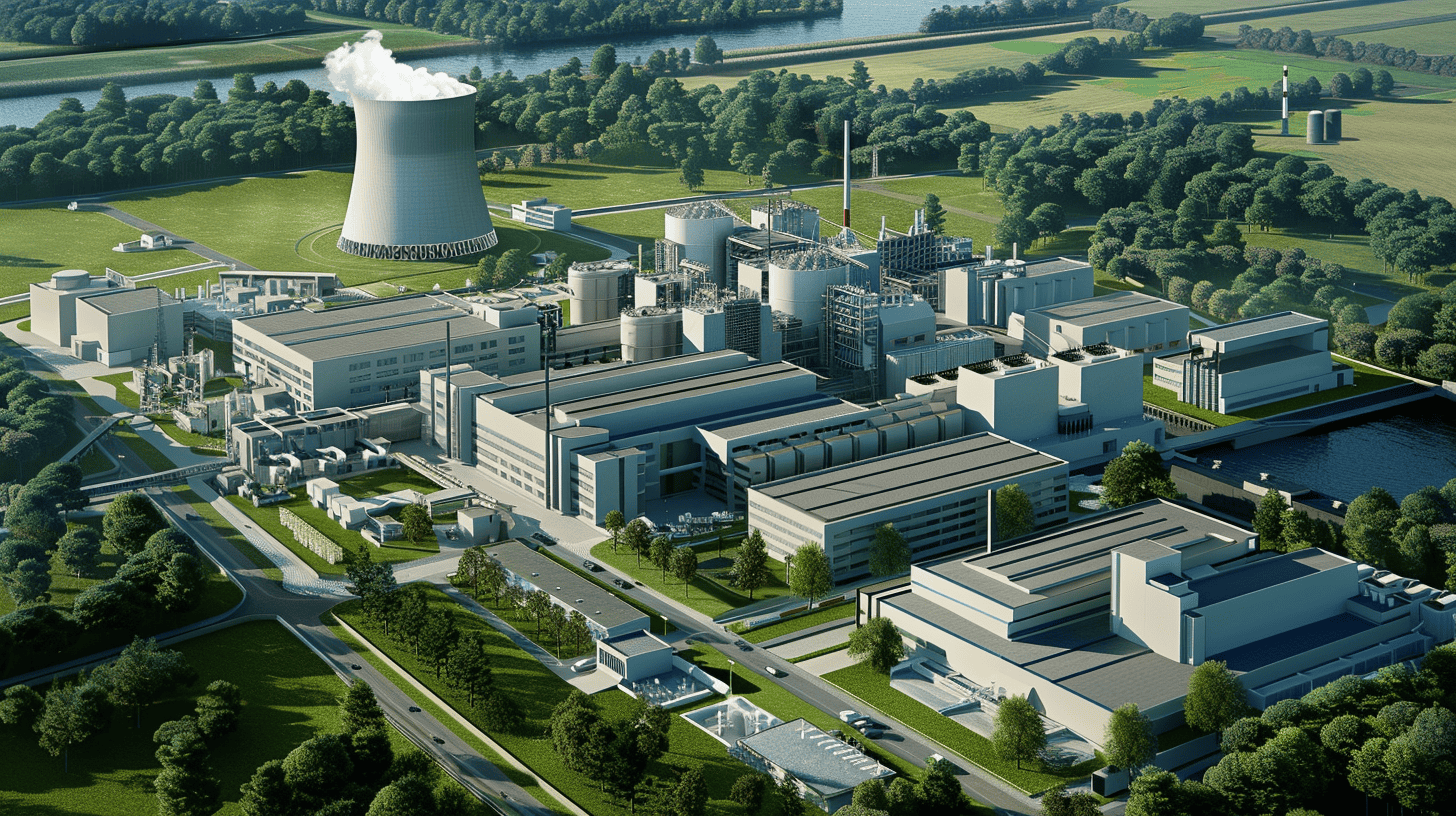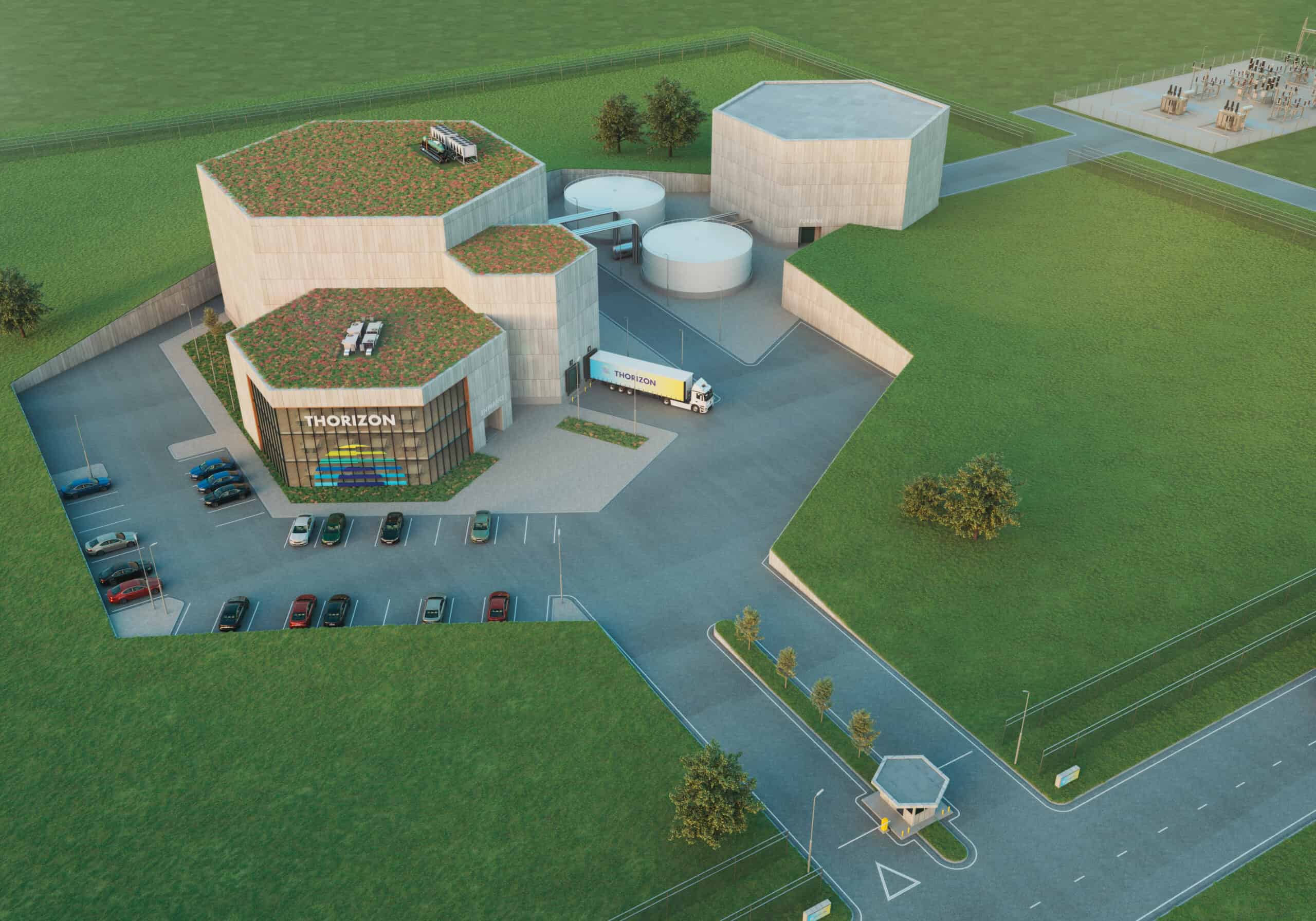
The quest for low-carbon power doesn’t rule out nuclear energy. World countries are indeed committing to new nuclear investments in the medium and long term. Molten salt reactor (MSR) technology has the potential to bring many of these advantages, making the atom’s power safer and more sustainable. With its origins in the mid-20th century, the MSR concept has been revitalized, combining high-temperature efficiency and enhanced safety measures to address the energy challenges of our time.
Why this is important:
As world countries plan to invest in nuclear power in the coming decades, research is being conducted to develop new nuclear technologies. Molten salt is one of them.
Advantages of molten salt reactors
Molten salt reactors offer several benefits over traditional nuclear reactors. MSRs can generate electricity with increased efficiency when operating at higher temperatures than conventional reactors. By eliminating the need for solid fuel, MSRs sidestep the complexities associated with manufacturing and disposal, leading to a simplified life cycle and a reduction in high-level waste. The versatility of MSRs allows them to adapt to a variety of nuclear fuel cycles, further extending fuel resources and potentially transforming them into nuclear waste “burners” or breeders.
These nuclear power plants not only stand to be more efficient but also safer. The low operating pressure reduces the risk of significant accidents, such as large breaks and loss of coolant, thereby enhancing overall reactor safety. This intrinsic safety feature, combined with less waste generation, positions MSRs as a formidable contender in the nuclear energy sector.
International research and collaboration
Research into MSRs is gaining momentum internationally, with various countries exploring multiple reactor concepts. These designs trace their origins back to the pioneering work of the Oak Ridge National Laboratory in the 1960s. To overcome the challenges faced by MSRs, such as materials-related issues and safety feature assessments, the International Atomic Energy Agency (IAEA) plays a key role in fostering international exchanges of information and supporting member states with objective, reliable data on reactor technologies.
One notable instance of progress is the model developed by Anna Smith’s research group at the Delft University of Technology, which could potentially disrupt the design phase of reactors. This model serves as a crucial tool for companies, particularly startups keen on building prototype reactors within the next decade. The team’s focus on understanding the properties of salt at the atomic scale aims to enhance predictions of safety and performance, aligning with the urgent needs of startups and the broader energy sector.

The resurgence of molten salt reactors
The renewed interest in MSRs is not just academic; it’s a response to the pressing need for sustainable, low-carbon power sources. Gerardo Martinez-Guridi, a nuclear engineer at the IAEA, emphasizes the crucial role of MSRs’ bolstered efficiency and passive safety characteristics in ensuring the sustainability of nuclear power. Furthermore, the potential for MSRs to burn spent nuclear fuel could significantly reduce the volume of radioactive waste requiring long-term storage.
Regulatory challenges and supply chain difficulties have previously hindered the commercial deployment of MSRs. However, several designs are now approaching deployment readiness in countries like the US, Canada, and China. This, paired with the IAEA’s support through knowledge exchange initiatives, is paving the way toward realizing MSR technology on a commercial scale.
Groundbreaking developments and prototypes
One of the headliners in MSR development is Kairos Power, which has recently achieved considerable milestones for its molten salt-cooled reactor. The startup completed a 1,000-hour test of its cooling system and secured a construction permit from the US Nuclear Regulatory Commission for its first nuclear test reactor. Kairos Power’s approach, focusing on using TRISO fuel and a molten salt cooling system, promises to make nuclear plants safer by removing the need for high-pressure systems to prevent water from boiling off.
What sets Kairos Power and other MSR-focused companies apart is their innovative approach to nuclear reactor design and construction. Edward Blandford, Kairos co-founder and chief technology officer, describes their technology to MIT Technology Review as “fundamentally different” from current commercial reactors, highlighting the unique safety and efficiency benefits of molten salt. The company’s engineering test unit, the world’s largest system built to circulate Flibe, a fluoride-based salt coolant, is a testament to their progress.

Delft’s research on thorium chloride salt
Another promising development in MSR technology is the work being done at the Delft University of Technology. Researchers there have developed thorium chloride salt, which could lead to a more sustainable nuclear fuel cycle with less long-lived radioactive waste. The potential of thorium, in combination with uranium or plutonium-based fuel, is being explored to create a more sustainable nuclear energy landscape.
This research is not conducted in isolation. It’s part of the broader European project MIMOSA, which aims to recycle and re-use plutonium and uranium from nuclear reactors for a more sustainable fuel cycle. With their improved safety and efficiency, alongside the international collaborative efforts in research and development, MSRs could very well become a cornerstone of future energy systems. The commitment to innovation and sustainability is clear, and the potential of molten salt in transforming nuclear power is hotter than ever.

